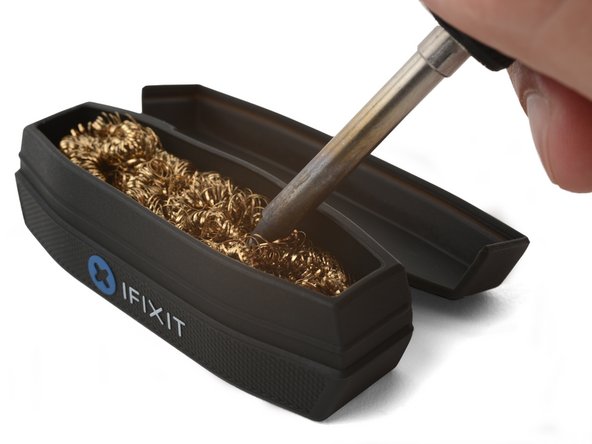crwdns2935425:04crwdne2935425:0
crwdns2931653:04crwdne2931653:0




Remove Excess Solder
-
After the entire working surface of the iron tip has been coated with solder, clean off any excess solder with your brass or damp cellulose sponge.
-
Whether you're actively soldering or about to store your iron, you should always keep your tip tinned for these two reasons:
-
A tinned tip transfers heat much more effectively, making soldering a breeze.
-
The coat of solder creates a barrier between the tip and environment, dramatically reducing the rate of oxidation.
crwdns2944171:0crwdnd2944171:0crwdnd2944171:0crwdnd2944171:0crwdne2944171:0